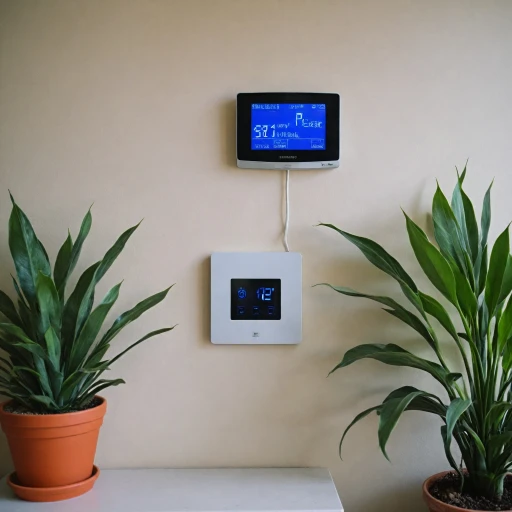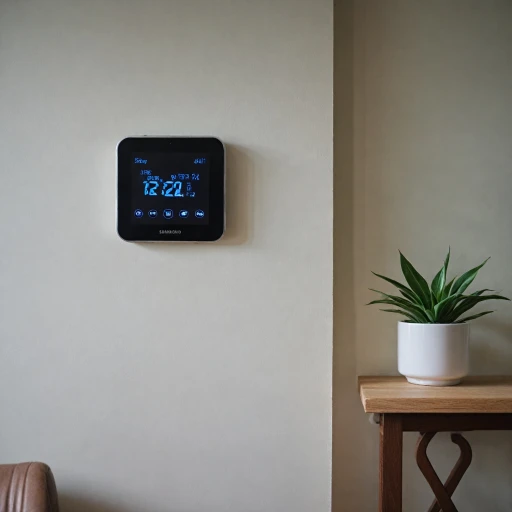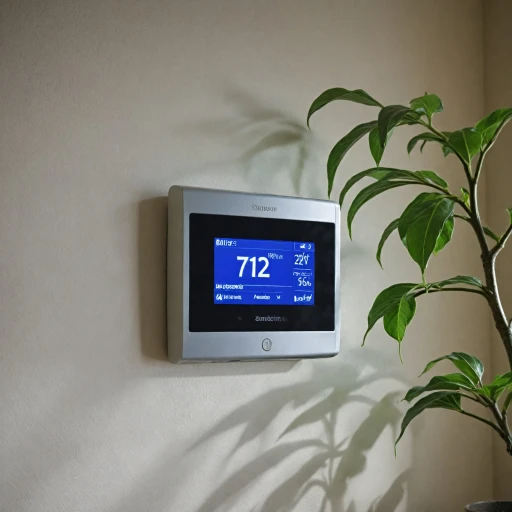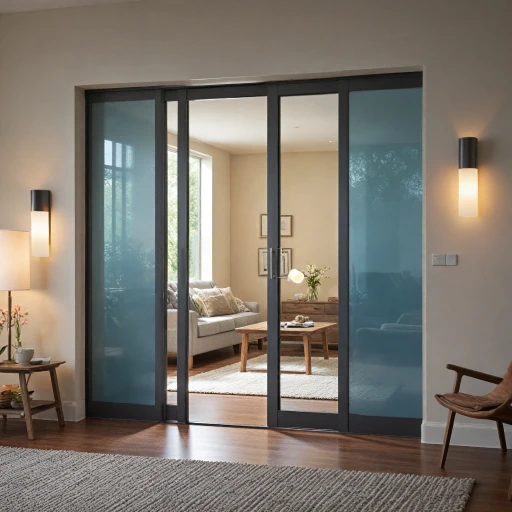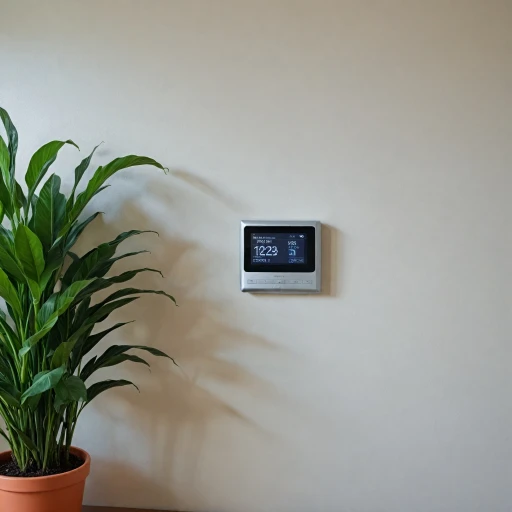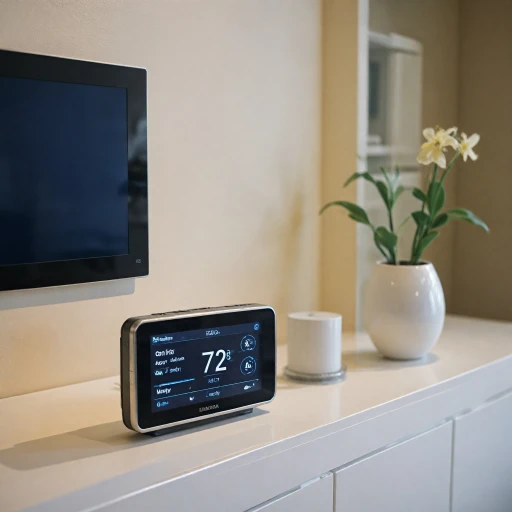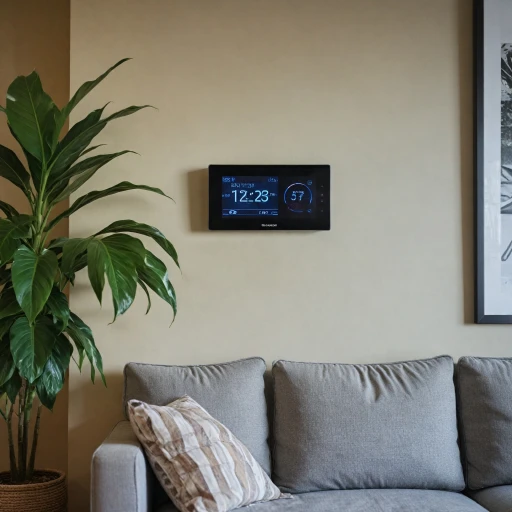
What is a Line Voltage WiFi Thermostat?
Defining the Line Voltage WiFi Thermostat
When you hear about smart thermostats, the line voltage WiFi thermostat might not be the first thing that comes to mind. Unlike low voltage thermostats that operate with common wire systems, line voltage models are specifically designed for electrically powered heating systems like baseboard heaters and electric heat pumps. They work with single pole wiring and directly connect to standard 120/240-volt circuits, making them ideal for electric baseboard heating and other high voltage electric systems. In essence, a line voltage thermostat acts as a switch to control the amount of heat produced by the electric heaters in your home. WiFi integration allows these thermostats to take traditional electric heating to a progressive and smarter level, offering programmable features and remote control via smartphone applications. To understand further how these thermostats can enhance comfort and savings within your home, consider the insights provided by a WiFi thermostat featuring remote sensors.Advantages of Using Line Voltage WiFi Thermostats
Why Choosing a Line Voltage WiFi Thermostat Can Be Beneficial
Owning a line voltage WiFi thermostat can significantly improve the efficiency of electric heating systems, especially for those using baseboard heaters or electric heat. Understanding the various benefits these devices offer can help in making an informed decision.- Energy Efficiency: One of the standout advantages is energy efficiency. Many smart thermostats, like those in the Mysa model series, allow precise control over temperature settings. This feature helps in optimizing your heating schedule, effectively lowering energy usage, which can result in substantial savings on your energy bills.
- Programmable Features: These thermostats come with programmable options that can adjust the temperature based on your daily routine. A day programmable thermostat lets you set different temperatures for specific times of the day, so your heating system works only when necessary, preserving energy and cutting costs.
- Seamless Connectivity: The integration of WiFi functionality gives users the power to control heating systems remotely through an app. This capability is incredibly beneficial for those who travel frequently or have fluctuating schedules, as it ensures you can manage your home’s climate from any location without hassle.
- Smart Home Integration: Smart thermostats aren't just standalone devices anymore. They are built to integrate smoothly with smart home ecosystems, allowing you to manage various devices in unison. Connecting with platforms like Google Assistant or Amazon Alexa enhances the automation capabilities, making home management more seamless.
- Temperature Precision: These devices provide precise control over the temperature, ensuring comfort while maintaining efficient energy usage. This exact control can be especially crucial for those who are sensitive to temperature fluctuations.
Installation Considerations
Things to Consider During Installation
Installing a line voltage wifi thermostat is a task that, while manageable for many with some DIY skills, requires careful consideration of specific details to ensure a smooth process. One of the first steps involves confirming compatibility with your home's heating system. These thermostats are generally compatible with electric baseboard heaters and line voltage systems rather than low voltage systems typically used for central heating and cooling.
Here are some key elements you should factor into the installation:
- Voltage Check: Ensure that your home's electrical system is suitable for a line voltage thermostat. These typically operate at 120V or 240V. Check the voltage rating of the existing thermostat line and compare it with the new model.
- Wiring Considerations: Line voltage thermostats typically require direct wiring to the electrical system. Check if your existing setup has a common wire, which some programmable thermostats may require. A common wire is usually needed for more advanced smart features and continuous power flow.
- Professional Installation: If you're not comfortable working with electric wires and house wiring, it might be wise to hire a professional. Their expertise can help avoid the risk of electrical mishaps.
- Location: Choose the right spot for installing your new smart thermostat. Ideally, it should be away from direct sunlight, heaters, and drafts to ensure accurate reading and control of ambient temperature.
- Integration: Some advanced models allow integration with other smart home devices. Before purchasing, check the compatibility with existing smart systems.
Installation can be a critical step for effectively using your new thermostat. It can considerably enhance the management of your home heating system, providing the benefits of energy efficiency and smart temperature control throughout the day. Should you need a detailed guide on integrating your system with advanced protocols like Z-Wave thermostats, more information is available.
Key Features to Look For
Selecting Features for Your Efficient Thermostat
When choosing a line voltage WiFi thermostat for your heating needs, identifying key features that best serve your space is crucial. With the right combination of technological advancements, you're not only ensuring comfort but also optimizing energy consumption.- Programmable Settings: This essential feature allows you to schedule heating and cooling settings for specific days. Whether you have electric baseboard heaters or a heat pump, a day programmable thermostat offers flexibility, ensuring temperatures adjust automatically when you're home or away.
- Energy Usage Tracking: Smart thermostats, like the Mysa model, often come with in-depth insights into energy consumption. Monitoring your heating habits helps in reducing unnecessary energy use, saving costs on your electric bill over business days.
- WiFi Connectivity: With a WiFi thermostat, you gain control over your temperature settings remotely. Simply use a compatible app on your smart device to adjust your home's climate from anywhere, bringing convenience to a new level.
- Compatibility with Electric Systems: Ensure the voltage thermostat you select is compatible with your existing heating systems, be it single pole electric baseboard heaters or another setup. Pairing your system with a suitable thermostat line ensures optimal heating performance.
- Built-in Sensors: Features like built-in motion or temperature sensors allow thermostats to detect room occupancy. This can automatically adjust heating settings, reducing energy use when spaces are unoccupied.
Common Issues and Troubleshooting
Handling Common Challenges with Line Voltage WiFi Thermostats
When stepping into the domain of smart thermostats, particularly the line voltage wifi models, it's beneficial to be prepared for some common challenges that might arise. Understanding these issues not only helps in maintaining optimal comfort but also ensures the efficient operation of your heating systems.- Compatibility Problems: A frequent concern with line voltage thermostats is determining compatibility with existing heating systems such as electric baseboard or heat pump. Ensuring the voltage thermostat matches your home's specific voltage is crucial, whether it’s a 120 or 240-volt system. Consulting the thermostat’s specifications and corresponding with your heater's requirements is a wise first step.
- WiFi Connectivity Issues: Given the smart functionality relies on wifi, connectivity issues can become a frustration. Factors like router distance, signal strength, and network stability can affect communication. A well-placed router and ensuring your wifi network is robust can alleviate many connectivity woes.
- Incorrect Temperature Readings: Sometimes users notice that the temperature displayed isn't accurate. This could be due to the thermostat's location. Placing the device away from direct sunlight, doors, or heat sources like baseboard heaters can yield more accurate readings. Such placement considerations are often overlooked but can significantly optimize temperature sensing.
- Programming Errors: With programmable thermostats, errors in setting the daily heating and cooling schedules can occur. Carefully reviewing programmed settings to align with routine comfort needs and adjusting for changes in routine or season can help prevent temperature mismatches.
- Power Supply Concerns: Unlike low voltage systems, line voltage models rely on direct electrical connections. Problems with wiring can lead to malfunction. Ensure that the thermostat is adequately connected to the power source, adhering to safety protocols.
- Lack of a Common Wire: Some thermostat models, like the Mysa smart thermostat, may require a common wire for optimum performance. If your installation doesn't include this wire, an adapter might be necessary to provide the needed power for consistent operation.
Future Trends in Smart Thermostats
Emerging Trends in the World of Smart Thermostats
In the evolving landscape of smart thermostats, innovative trends continue to shape the way we manage home heating and cooling. As technology advances, these devices are not just about controlling temperature; they are becoming comprehensive home energy solutions.- Integration with Smart Home Ecosystems: Smart thermostats are increasingly being integrated with broader smart home systems. Manufacturers are focusing on compatibility with platforms like Google Home, Amazon Alexa, and Apple HomeKit. This shift not only enhances user convenience but also creates a more cohesive smart home environment.
- Enhanced Energy Efficiency: As concerns about energy consumption grow, smart thermostats are expected to play a crucial role in energy management. New models, like the Mysa smart thermostat, are being designed to optimize energy usage for electric baseboard and heat pump systems, significantly reducing energy bills.
- AI and Machine Learning: The adoption of artificial intelligence and machine learning technologies in smart thermostats allows for more accurate predictions and adaptability to user behavior. These technologies enable the thermostat to learn daily routines and adjust heating and cooling schedules accordingly, leading to further efficiency gains.
- Remote Monitoring and Enhanced Control: With advancements in WiFi technology, users are gaining greater control over their heating systems from anywhere, at any time. This remote accessibility is particularly beneficial for those managing multiple properties or those often away from home.
- Focus on Sustainability: With a growing emphasis on sustainability, manufacturers are producing thermostats with eco-friendly features. This includes the use of recyclable materials and designing for long lifespan to minimize waste.

